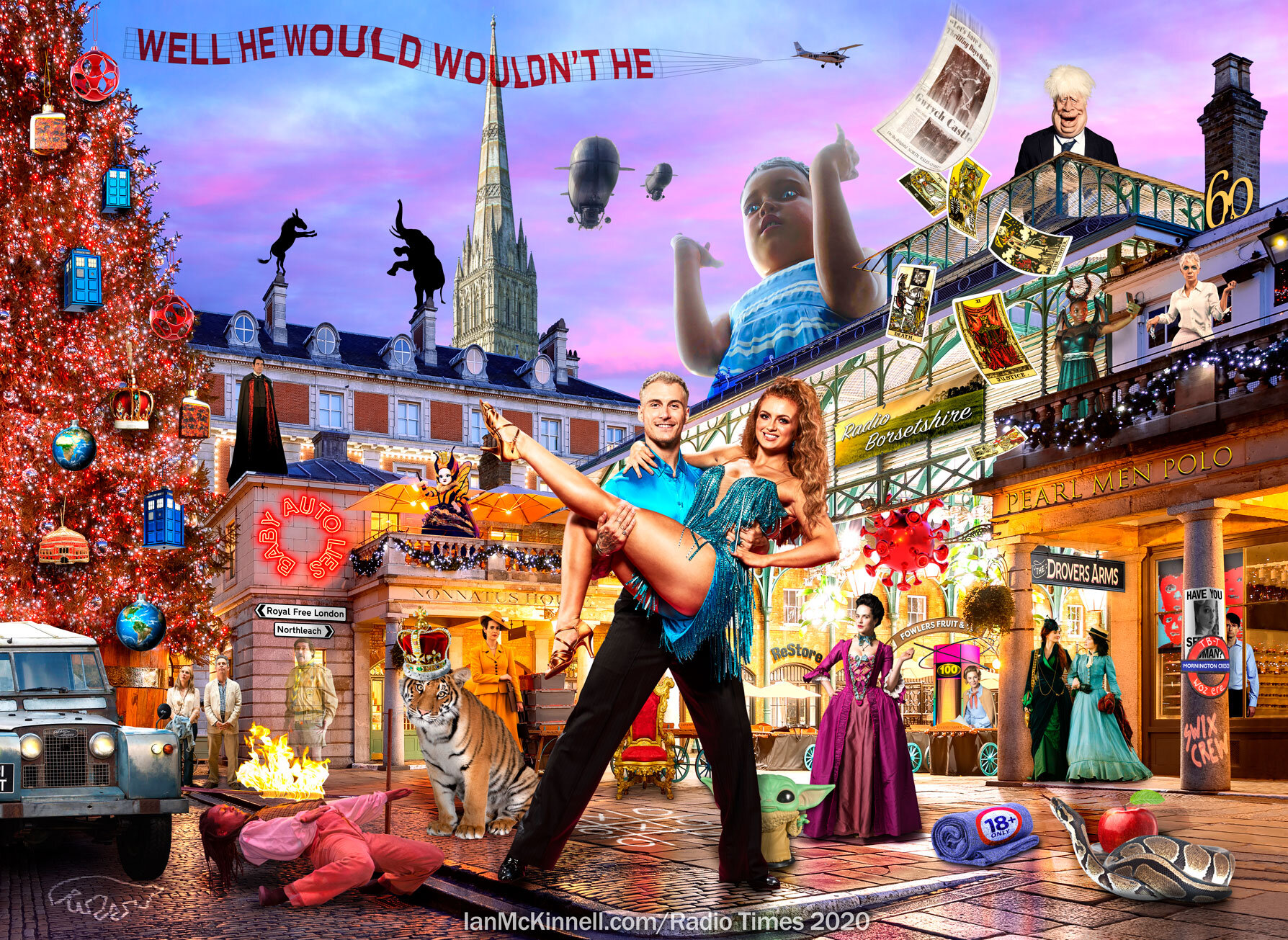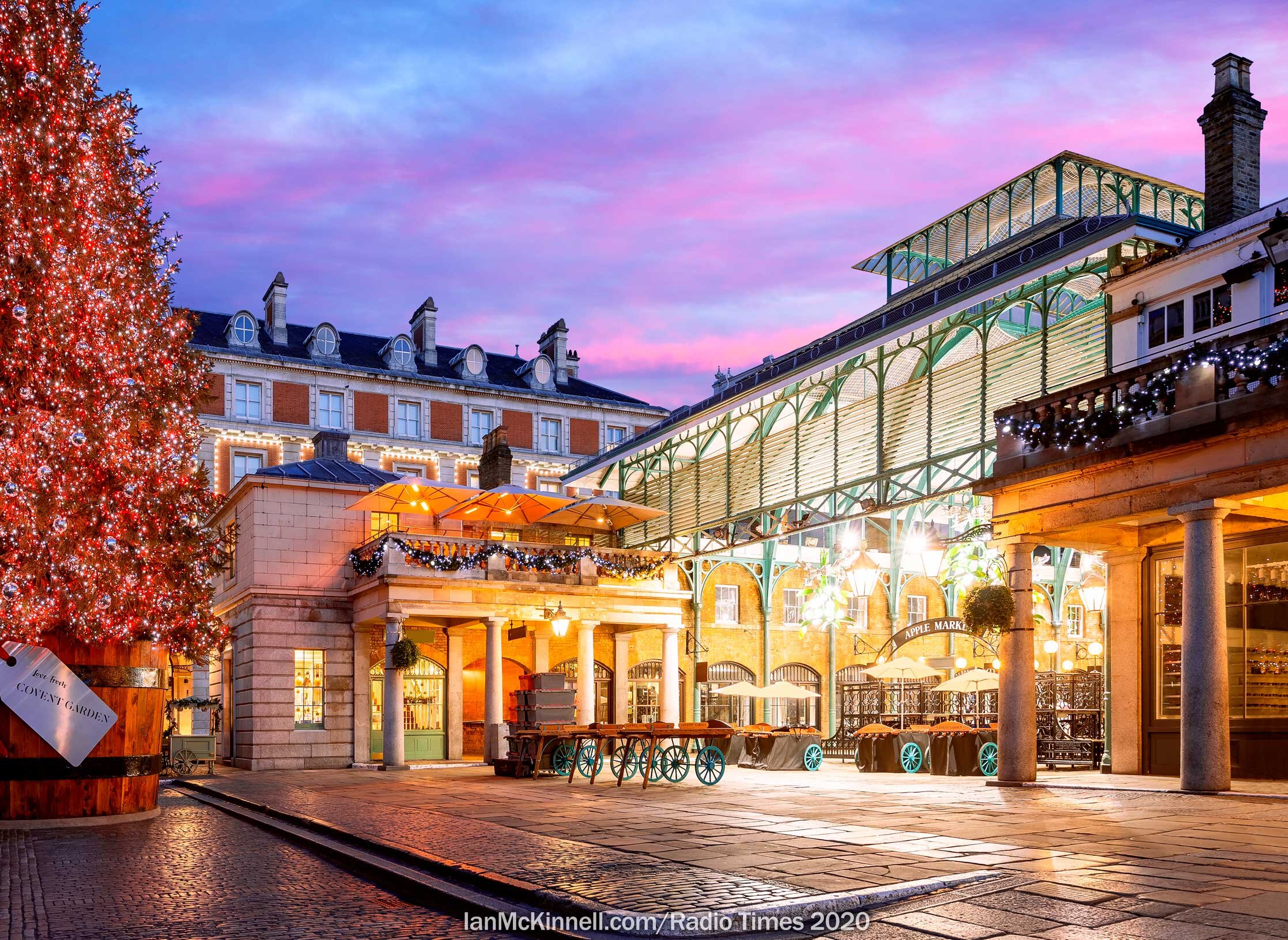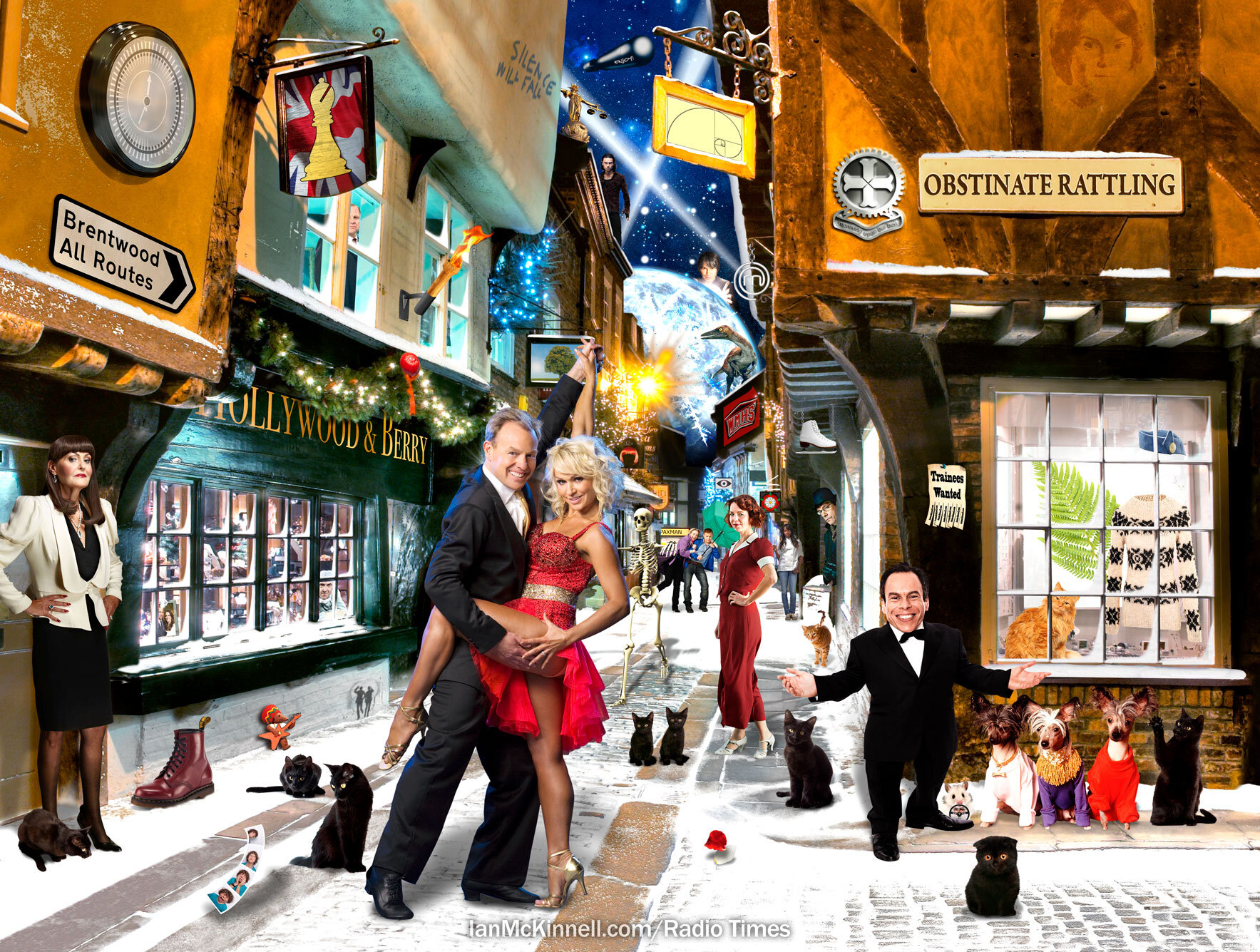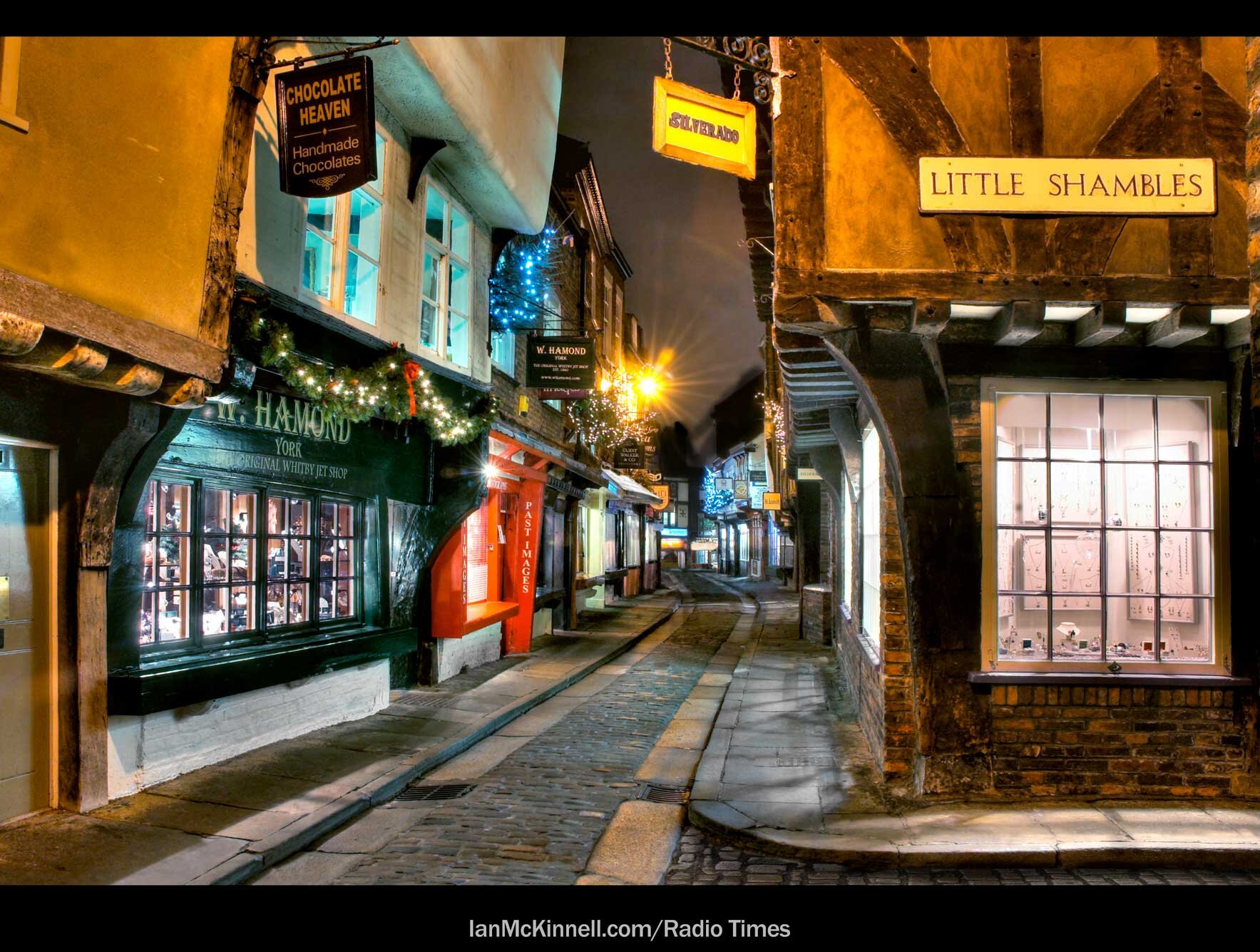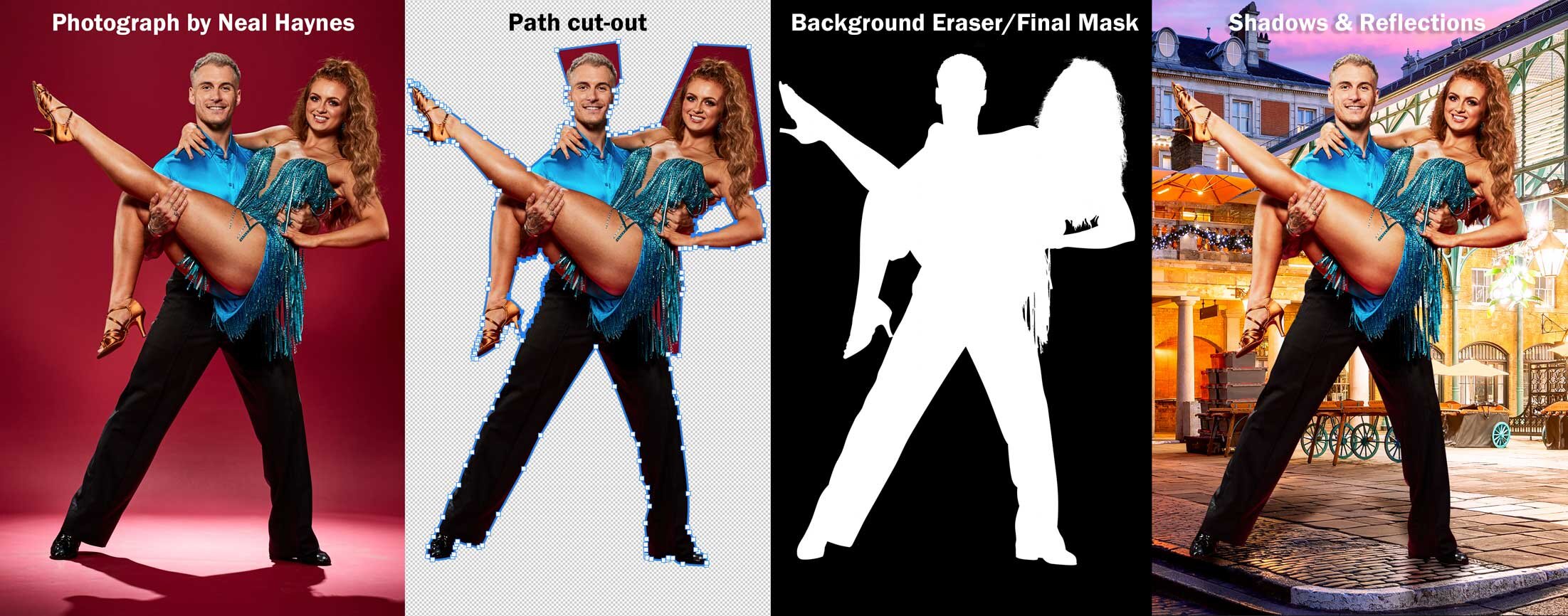The Radio Times Christmas double issue is a great British tradition, one of Britain's best selling magazines. Every year since 2008, when art director Paul Smith first commissioned it, each issue has featured my Big Picture Quiz, a complex graphic composite of photo realistic illustration, retouching, photographs, AI, & 3D renders.
The illustration contains clues to the titles of 50 shows. These quizzes are hugely popular and there are prizes to be won. There are a number of online forums where people help each other to try and solve all of the clues. I enjoy watching these forums but I never post anything!
This is how the photo illustrations are created, in collaboration with the art director Jacob Howard. Yes, they do take ages!
The most important part of the illustration and compositing process is selecting the background, usually starting in late September. The image has to fulfil many requirements: it has to have:
•A seasonal ‘Christmassy’ atmosphere • An open area, a ‘stage’ for people and objects •Depicted at twilight and artificial lights so that images with varied lighting can be added •Windows and buildings for illustrations and graphics to be placed in the setting•Shot from eye-level (as most of the clues will be)•Few (if any) people and cars•Good technical quality.
You can imagine how few images meet all of these criteria.
Some years add snow using various retouching and illustration techniques, as in this earlier quiz based on a photo of Shambles in York taken by Martin Williams.
Occasionally I photograph the background myself, but usually I spend many, many hours searching through various picture libraries.
The image finally selected above is of Covent Garden in London, coincidentally, only a few minutes walk from my studio. It’s by Joe Daniel Price. It’s the first background where I’ve used the original sky. I usually illustrate it with a starry night sky, a useful place to put clues.
Meanwhile the list of 50 programmes for the clue challenges is being assembled. Some titles suit quizzes better than others so there has to be a lot of flexibility. The list is based on the Radio Times magazines top programmes of the year combined with various other lists.
One programme is always there - the most popular show on UK television, Strictly Come Dancing. This is the most important clue as it determines the composition of the Quiz and the images are always colourful and exciting. The Quiz is finished before the Strictly final, so we have to guess who makes it through. This is usually the first image that I work with as it dictates the overall layout of the quiz.
Before the pandemic I ran workshops in advanced Photoshop for small groups of creative professionals and the Quiz was always a useful teaching tool as it involves so many Photoshop techniques. One of the most important aspects, one that will occupy much of professional retouchers time, is cutting out to isolate an image from its background. There are many ways of doing this. In this case I created an outline path for dancers, a flexible line that goes from point to point that can be curved or straight. Hair is the most difficult element to cut out. Here I used Photoshop’s ‘background eraser’ tool and then painted some additional, individual hairs using the brush tool to improve and soften the edges.
I use Photoshop masks to remove the background elements so I always keep the original image on the bottom layer as I work. I import the individual images as a smart object so that it can be easily edited individually and resized without any loss of image quality.
I double the size of all the images involved so I have more pixels to work with. I always ensure that all verticals are really vertical using ‘transform’ in Photoshop and often slightly change the proportions to fit the page.
It’s important to establish the perspective in this image at a very early stage. For the clues to look believable they have to visually ‘fit’ into the illustration. Vanishing points are a hypothetical spot where all the lines of perspective appear to converge, which can be determined by drawing lines along the edges of the buildings to where they meet. Then any line that is drawn from the vanishing point will match the perspective in the image.
Some perspective transformations are more complex than others.
The images for the Quiz come from a wide variety of sources - press images, film stills, picture libraries, all of which need to be to fitted in to the visual ambience of the Quiz. I illustrate some of the clues and some are 3D CGI renders, created using the same software used to make Hollywood movies.
3D model of a Coronavirus as a Christmas decoration: the model, alpha channel and final render.
There’s one event in 2020 that no-one will ever forget, so I couldn’t ignore it. I created a 3D model of the virus, based on an earlier modeI I made of a Christmas bauble. I applied a reflective glass surface texture and used a virtual CGI camera looking up slightly to match the backgrounds perspective and surrounded the 3D model with an environment to match the background.
3D model of Doctor Who's Tardis as a Christmas ornament.
The Tardis was modelled in 3D CGI and lit in the same way, with several virtual cameras to create a number of renderings in different perspectives to match their relative position on the tree.
Using Photoshops ‘Puppet Warp’ filer.
The clues are adapted and changed as the photo illustration goes on. The clues are created one by one rather than all 50 being illustrated beforehand. Some clues don’t make it, because either the visual concept, the image styling or the image itself isn’t strong enough and they’re replaced by something else. A clue for the programme Elizabeth is Missing had to be dropped at the last moment for example, when someone noticed that it was actually broadcast in late 2019
I really enjoy the challenge of creating the Quizzes, I hope you enjoy solving them. There’s a picture Quiz every Christmas in the Radio Times, as well as the occasional quiz at other times of the year, some of which you can find in my blog. And the answers? Well, confidentially is an important part of my work and I wouldn’t want to spoil the Quiz for you!
